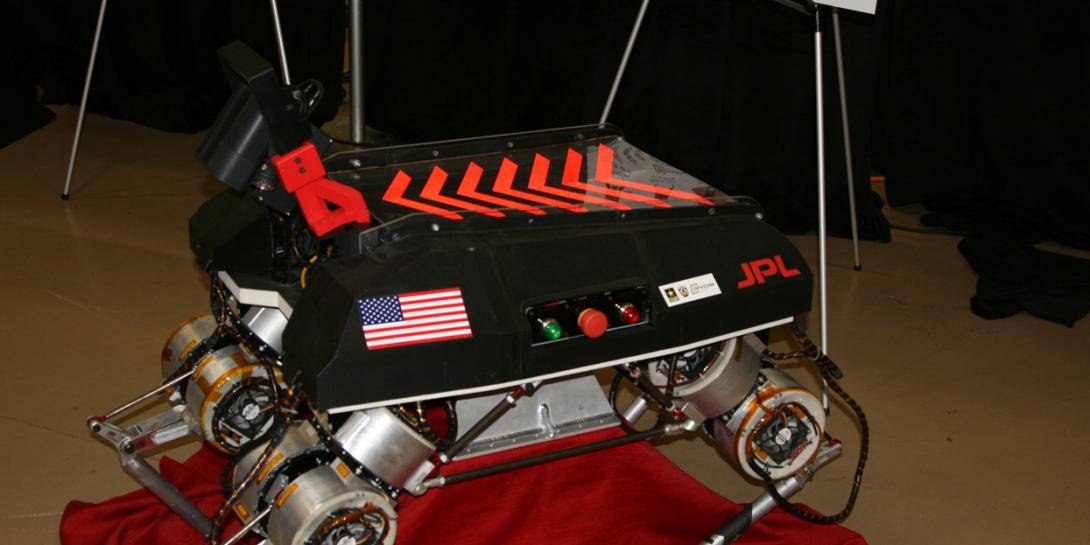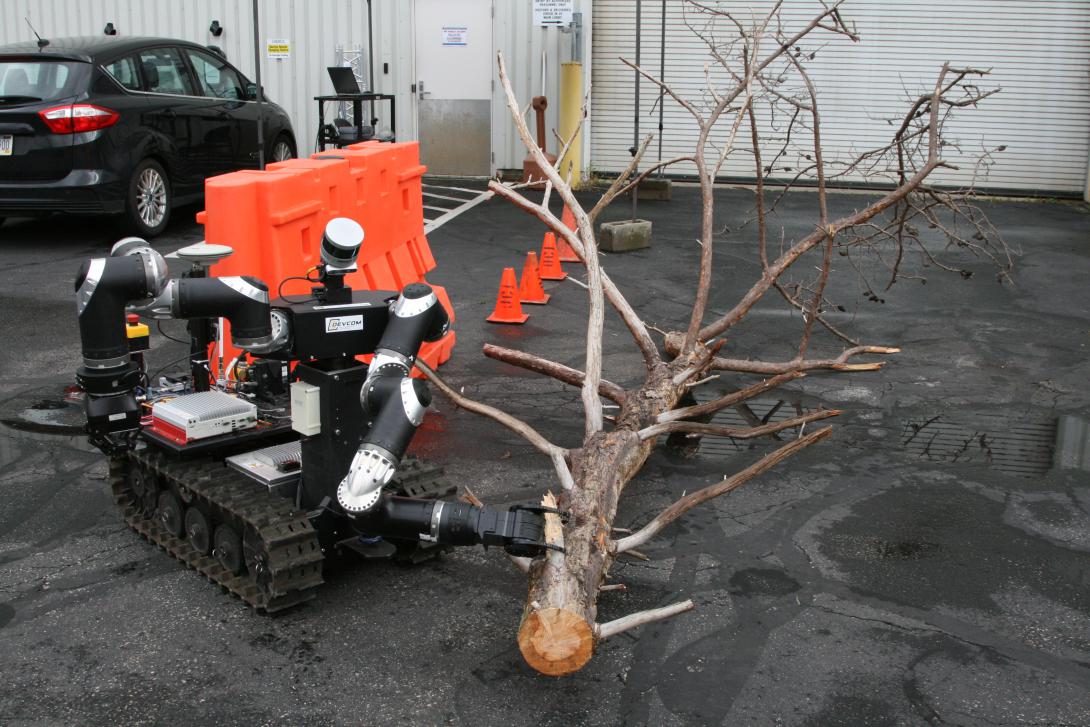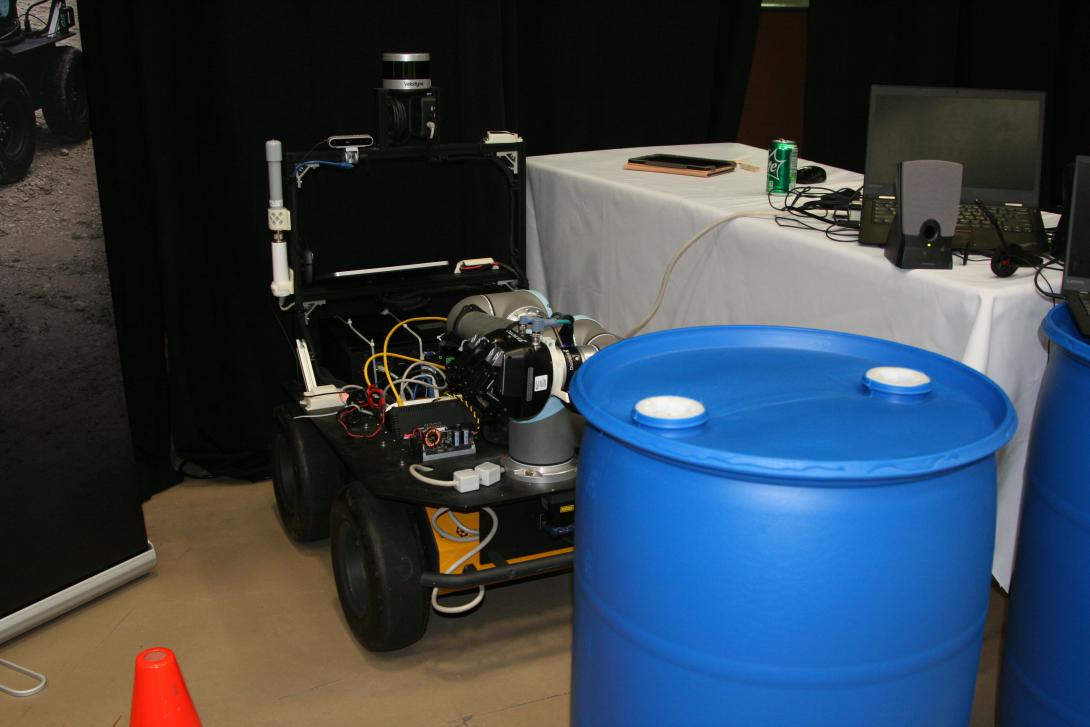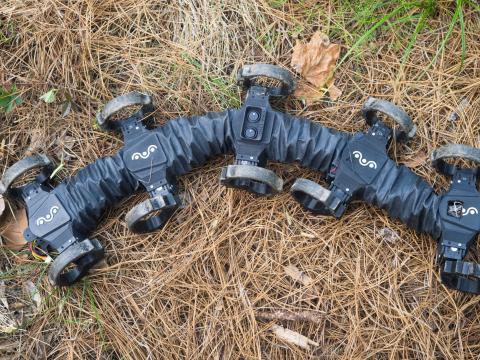Perception, Manipulation and Teaming Generate Army Robotics Achievements
Autonomous vehicles that can clear debris from roads, move containers after determining their contents and scuttle across rough terrain amid changing environments have emerged as the Army Research Laboratory (ARL) marked 10 years of collaborative research with industry and academia. The goals reached in the capstone of the Robotics Collaborative Technology Alliance (RCTA) were presented at the Carnegie Mellon University National Robotics Engineering Center (NREC) in Pittsburgh, as the ARL demonstrated several robots designed around Army battlefield needs.
ARL Director Philip Perconti warranted that the future of Army unmanned systems depends on the development of highly capable vehicles. These must be capable of serving as partners to human soldiers (SIGNAL Magazine, December 2018) while keeping up with battlefield operations tempo.
One key to achieving this goal is to improve robot perception. Martial Hebert of Carnegie Mellon University explained that a robot must be able to generate a description of the local environment at a substantial degree of fidelity, with limited resources available for learning and inference. This environment is likely to be dynamic, and the robot must account for these changes.
For a robot to function effectively, manipulation is key. Siddhartha Srinivasa of the University of Washington, explained that the interaction component between agents is what makes manipulation so hard. Where a human easily can pick up a coffee cup sitting on a table directly in front of the person, a robot must carefully determine the approach to adopt and the movements to engage just to grasp and pick up the cup.
Nick Roy of the Massachusetts Institute of Technology described how teaming between robots and humans involved the ability to follow instructions, the ability to follow human partners, and shared representations that match human cognition. “By collecting large amounts of data, we can get good representation of human actions,” he pointed out.
A variety of robots demonstrated these skills. They were effectively told what to do in general terms, and then they had to figure out how to achieve their goals. The LLAMA robot, a quadruped, can scuttle on all fours to overcome or avoid obstacles. It chooses which action to take—whether to climb over an object or go around it—based on its knowledge of its own capabilities and its assessment of its potential path based on LIDAR sensors.
A conventional treaded robot demonstrated enhanced manipulation capabilities. Despite having only one camera on its neck, it was able to open a small carrying case and extricate a purse-like bag without any human interaction. In an outdoors demonstration, the same robot showed how it can clear a path of debris by analyzing the obstacles and then deciding, based on its capabilities, whether to remove an obstacle from the scene or simply drag it out of the way.
A smaller wheeled robot can focus on ensuring a safe environment for foot soldiers. Faced with two sealed barrels—possibly containing hazardous materials—in different locations on a path, this robot will assess the contents of each container, determine by nudging each barrel which one is only partly full and has less mass, and then carefully move the lighter barrel out of the way so that soldiers can pass safely.
Robotic researchers emphasize that each of these systems can be improved. Speed of operation is important, as their actions must be able to keep pace with warfighters in combat. The LLAMA quadruped can be made lighter, faster and capable of carrying a greater payload, its engineers say. Grasping robots can be taught better ways of choosing how to manipulate objects.
Future steps will involve consolidating these advances across the spectrum of battlefield robots. Meanwhile, research continues into new algorithms that will improve robotic IQs.
More on the ARL’s robotics research effort can be read in the December 2019 issue of SIGNAL Magazine, in print and online December 2.







Comments